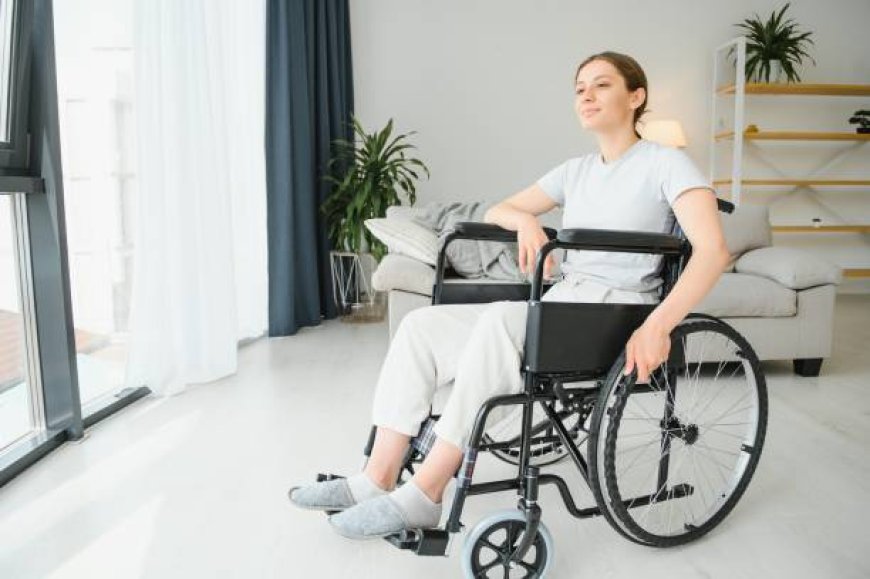Home Care for Paralyzed Patients: A Complete Guide
Comprehensive guide to home care for paralyzed patients, covering safety, daily routines, therapy, emotional support, and affordable solutions. Read now!

Caring for a paralyzed patient at home is both a profound responsibility and a meaningful act of love. Whether the paralysis is the result of an injury, stroke, or a progressive neurological condition, providing quality home care ensures comfort, dignity, and improved quality of life for your loved one. This guide covers the essentials of home care for paralyzed individuals, from physical needs to emotional well-being and caregiver support.
Understanding the Nature of Paralysis
Paralysis involves the loss of muscle function in part of the body. It can be partial or complete and can affect one or multiple areas (e.g., paraplegia or quadriplegia). Every patient’s situation is unique, so a care plan should be tailored based on the type and extent of paralysis, medical condition, and personal preferences.
Before beginning home care, consult with medical professionals to understand the patient's diagnosis, prognosis, and recommended therapies.
Preparing the Home Environment
A safe and accessible home environment is essential. Here are key modifications that may help:
-
Accessible Entryways: Install ramps, widened doors, and handrails where necessary.
-
Bedroom Modifications: Use a hospital bed with adjustable height and positioning. Install side rails for safety.
-
Bathroom Safety: Add grab bars, non-slip mats, and possibly a roll-in shower or commode chair.
-
Mobility Aids: Use wheelchairs, lifts, and transfer boards to move the patient safely.
-
Home Elevators: For multi-level homes in the Cheyenne, WY area, consider installing an affordable home elevator. These systems offer a practical and safe solution for navigating between floors, helping to reduce strain on both the patient and the caregiver.
Keeping essentials within easy reach and eliminating tripping hazards will greatly enhance both safety and independence.
Daily Care Routines
Daily care includes helping with hygiene, feeding, dressing, and movement. Key elements include:
-
Skin Care: Regularly reposition the patient to prevent pressure sores (bedsores). Check the skin daily for redness or irritation.
-
Personal Hygiene: Assist with bathing, oral care, grooming, and toileting. Maintain dignity and privacy throughout.
-
Feeding and Nutrition: Ensure proper nutrition tailored to the patient’s dietary needs. If swallowing is an issue, consult a speech-language pathologist.
-
Medication Management: Keep a schedule of all medications, dosages, and times. Set reminders or use a pill organizer.
Creating a consistent routine helps the patient feel more in control and reduces anxiety.
Physical and Occupational Therapy
Paralyzed patients often need ongoing physical and occupational therapy to maintain muscle tone, avoid complications, and build independence in daily activities.
-
Physical Therapy: Includes exercises to maintain circulation, prevent muscle atrophy, and improve flexibility.
-
Occupational Therapy: Helps the patient relearn skills and adapt to their environment using assistive devices.
Many of these therapies can be conducted at home with professional guidance, offering convenience and continuity of care.
Emotional and Social Support
Paralysis can lead to emotional challenges such as depression, anxiety, and social isolation. Addressing mental and emotional health is just as important as physical care.
-
Encourage Social Interaction: Include the patient in family activities, video calls, or community support groups.
-
Seek Counseling: Professional therapy can help patients cope with emotional struggles and find purpose in new routines.
-
Foster Independence: Allow the patient to make decisions, even small ones, to promote a sense of control and autonomy.
Compassion, patience, and empathy are invaluable in helping your loved one adjust and thrive.
Caregiver Wellness
Caring for someone with paralysis can be physically and emotionally demanding. To be effective, caregivers must also care for themselves.
-
Take Breaks: Schedule regular respite time to rest and recharge.
-
Join Support Groups: Connect with others who understand the caregiving experience.
-
Ask for Help: Don't hesitate to rely on family members, friends, or professional home health aides when needed.
Remember, your well-being directly impacts the quality of care you provide, and you can also check care
When to Seek Professional Help
While family care is crucial, some situations call for professional assistance. Consider in-home nursing care, physical therapists, or part-time aides for complex medical needs or daily care tasks that become too difficult to manage alone.
If the patient shows signs of worsening health, such as sudden changes in mobility, increased pain, or mood swings, consult a healthcare provider promptly.
Final Thoughts
Home care for paralyzed patients involves more than meeting physical needs—it’s about creating an environment where they feel safe, valued, and engaged. With the right knowledge, resources, and emotional support, caregiving can be a journey of strength, connection, and healing for both you and your loved one.
Whether you’re just beginning this journey or have been providing care for some time, know that your role is vital and appreciated. With compassion and preparation, home care can be a powerful foundation for recovery, comfort, and dignity.







